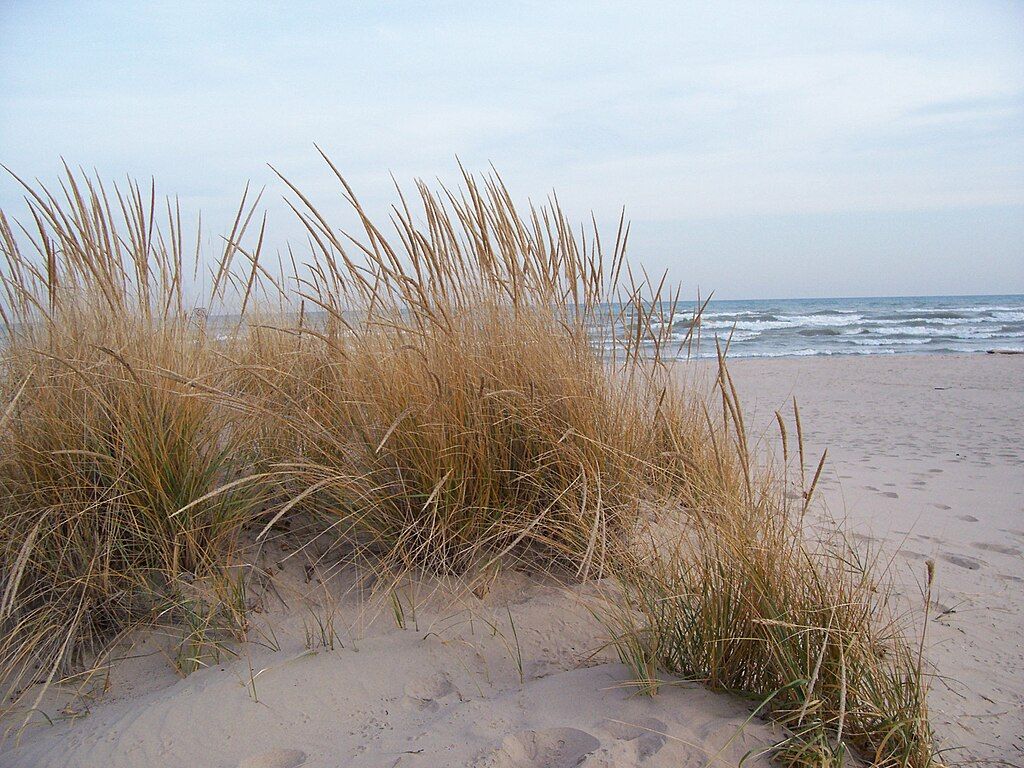
28 June 2023
It’s time for summer vacation when we climb over grassy dunes to get to the beach.
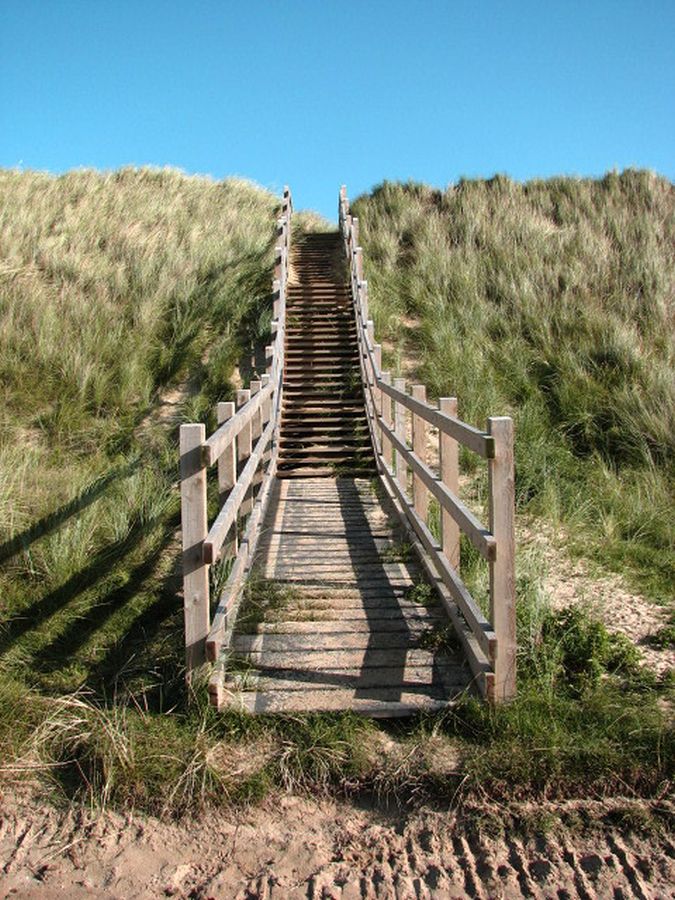
Beach grass planted on our sandy coasts stabilizes dunes and protects against storms. As the grass expands it holds down larger areas and provides more protection, but a new study published this month in Science Advances found that dune grass fails in major storms.
The same scientists that taught us the value of dune grass realized they’d never tested it for major storms. Rusty Feagin, a coastal ecologist at Texas A&M University, decided to simulate the effects of Hurricane Sandy (October 2012) so he teamed up with Oregon State University where they house the largest wave tank complex in the U.S. It’s longer than a football field (104 m).
The team set up two dunes, one planted in dune grass whose roots spent six months taking hold, the other a bare dune. “VD” = vegetated dune, “BD” = bare dune
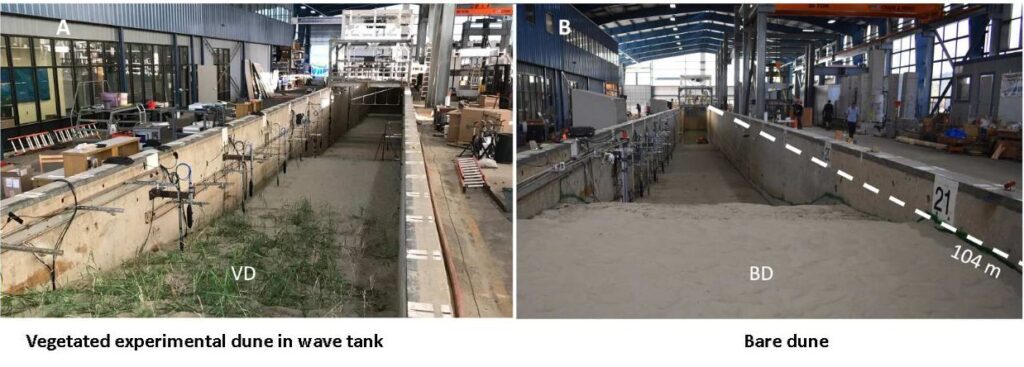
Then they pounded the dunes with a Hurricane Sandy simulation — 19 hours of punishing waves — stopping every half-hour to laser-scan the dunes.
On the bare dune the waves rolled straight up slope (“BD runup”) and removed sand but left the slope basically the same. On the vegetated dune the waves undercut the grass and caused a cliff, making the dune more vulnerable in future storms. (“VD runup” and yellow circle)

Here’s what the vegetated dune looked like near the end of the storm (from above and the cliff face).
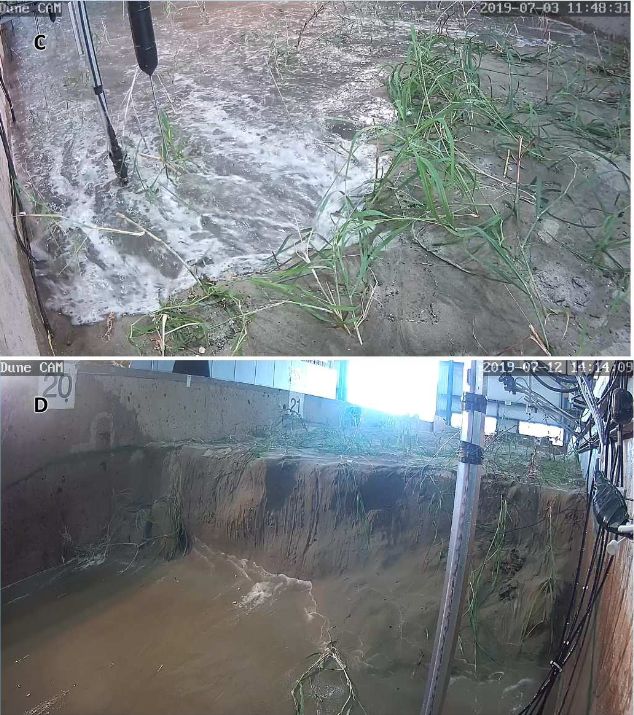
Here’s a real life example of major storm damage to a grassy dune.
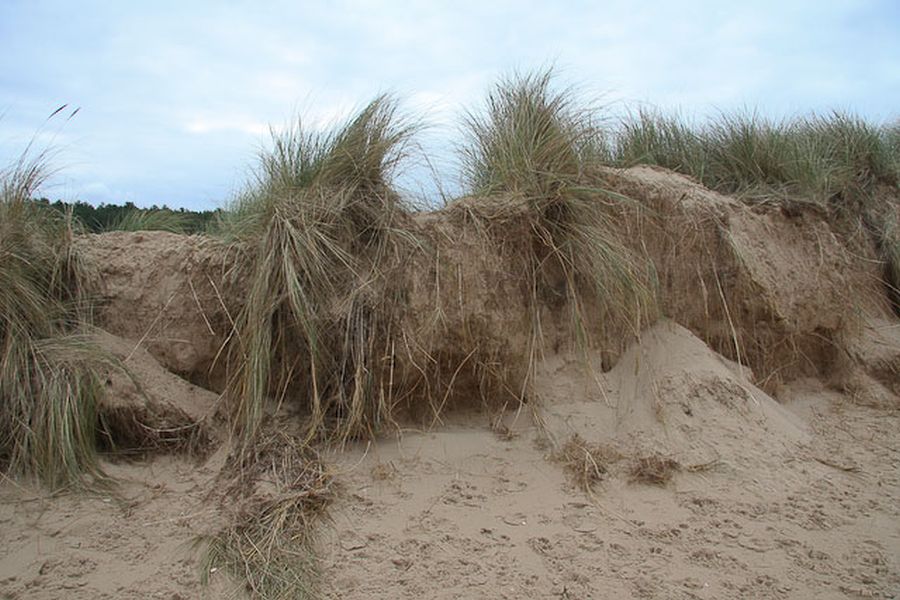
Feagin says we should still use dune grass, but change our expectations. Science Magazine explains:
Even if the plants cause dunes to erode in severe conditions, Feagin says, it’s still worth having them for protection from milder storms. “When that medium-small storm hits, [the dune] is going to do its job, but the giant [storm] every 10 years is gonna take it out.” And vegetated dunes have advantages over concrete walls for storm protection, because native plants can grow and spread. That means the plants can help dunes increase in size as they trap sand, and perhaps keep up with rising sea levels.
The take-home point of paper is “more about managing expectations” of vegetated dunes, Feagin says. They are not a panacea for coastal protection, he suggests — and land managers shouldn’t expect them to deliver permanent stability.
Read more about the dune grass experiment in Science Magazine: In a twist, beach grass could make dunes more vulnerable to storms. See the study itself in Science Advances.
(photos from Wikimedia Commons and Science Advances: Does vegetation accelerate coastal dune erosion during extreme events?, Creative Commons license)